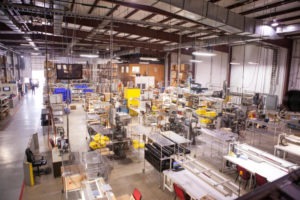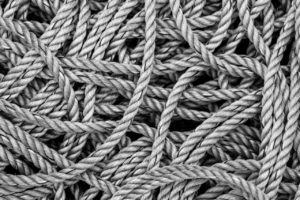Plastics touch almost every part of our lives today, and the reason is simple: its versatility makes it a material highly suited to diverse manufacturing requirements. Plastics give us safe and durable solutions for many scenarios, from the automotive and aerospace industries to sports equipment and household goods — but not all plastics manufacturing methods are the same.
When you approach the problem of selecting a manufacturing process for a part you wish to produce in plastic, it’s important to understand the different solutions available. Let’s look at the most common methods used by plastics manufacturers in Texas, then consider how you can make a smart selection.
Extrusion Molds
A common method for simpler components, especially tube shapes, extrusion production forces molten plastic at high pressure through and out of a molding die. As the plastic cools, it retains the shape that the extrusion die gave it, making it ideal for creating tubular structures such as PVC hoses and pipes. Because the molding die is usually a relatively simple design, it is cheaper to design and operate. However, extrusion is not suitable for many form factors common in plastics today.
Injection Molds
To achieve more complex part designs that can eventually see use in other assemblies or produce a single component for sale, injection molding is typically the method of choice. Unlike extrusion molds, injection molds inject the molten plastic into a hollow mold cavity shaped like the part. The plastic cools and hardens inside the mold, which then ejects the part before closing to repeat the process. Injection molding processes can handle various plastic materials and can support complex part designs while maintaining rapid output capabilities.
3D Printing/Additive Manufacturing
On the cutting edge of plastics manufacturing is 3D printing, which creates solid parts made of a single piece of plastic by depositing the material layer by layer. Ideal for prototyping parts for injection molds and producing components with high strength requirements, 3D printing is still a slow and expensive process that continues to expand at the industrial scale. Combined with other niche manufacturing methods, such as vacuum forming, casting and subtractive machining, these alternative solutions offer businesses a way to achieve specialized results not possible with injection molds.
Which Solution is Best? Assessing Your Options
Although all these options have strengths and weaknesses that come into play based on the specific nature of a given manufacturing run, there is only one best suited for the largest production cycles of complex 3D shapes.
When your business needs a plastics company near you to produce plastics parts in high volume, at great speed and with consistent accuracy, virtually no method can achieve the results you seek aside from injection molding. Although it takes time and a larger upfront investment to design and produce the molds for these parts, the cost-per-part drops dramatically once completed. Over very large production runs, each part could be perhaps pennies on the dollar.
Find Professional Help with Reliant Plastics Today Exploring the world of plastics manufacturing is made simpler when you have an experienced guide close at hand. At Reliant Plastics, a well-established domestic injection molding company, we can help your team assess the right procedure for your parts while paving the way towards prototypes and more. Contact us today to find out more about how to tap into advanced manufacturing today.




